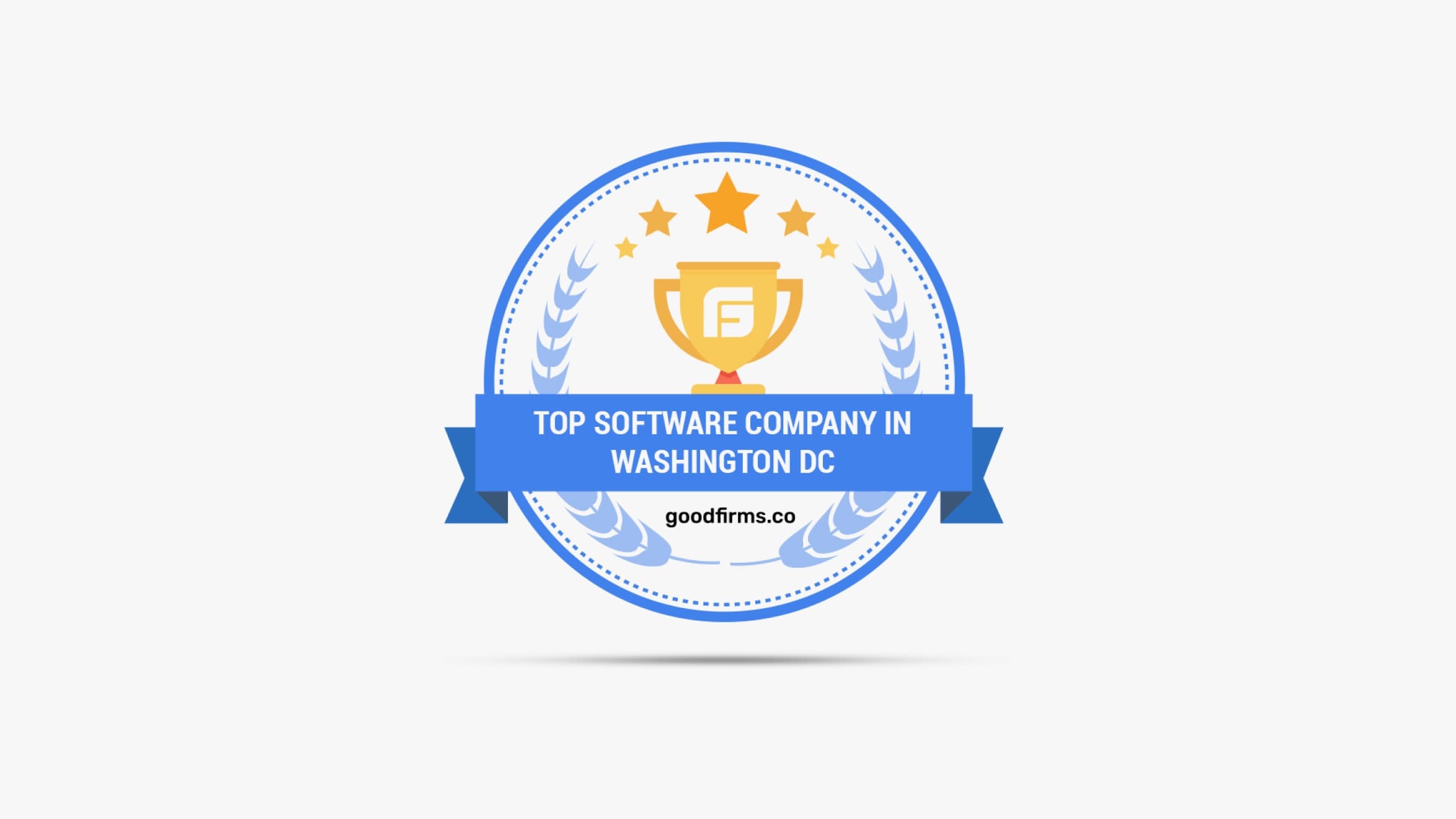Nearly all companies face this decision as they grow: To stick with off-the-shelf software or invest in custom software development. Increasing growth in business automation requires all organizations to face the “build or buy” dilemma.
One approach is to inquire if there is already a software solution out there that provides more than 80% of the necessary features required by the organization. To make this choice, certain factors like budget, nature of the enterprise, etc should be considered fully.
In terms of efficiency, functionality, and usability, there is a huge difference between having an off the shelf solution versus a custom one. Therefore, before deciding which type of software would best meet your business’ needs, you should consider the benefits and limitations of both; off-the-shelf and custom software.
By understanding the biggest differences between these two types, it makes it easier to make the right choice.
Introduction to custom software development
IBM defines custom software development as “the process of designing, creating, deploying and maintaining software for a specific set of users, functions or organizations.” It is also referred to as a bespoke software because it is tailored precisely for the end-users needs. It aims to work according to a precise set of requirements.
Examples can include designing maintenance software for manufacturers or online banking apps for unambiguous requirements of banks. These software can be developed in-house by in-house teams or outsourced to third parties vendors. No matter who the developing party is, custom software is designed to address the needs of these users more specifically than most conventional off-the-shelf software.
The development of custom technology solutions also referred to as custom software development is usually more costly than paying for an off-the-shelf software plan. So for custom development to be successful, there needs to be a detailed plan and structure of the entire process as per the requirements. For example, Microsoft Word is an off the shelf software designed for the masses as a document creation solution to their diverse needs, however, it does not a specific purpose where content can be automatically created and distributed in per-defined channels as per users custom needs.
Process of custom software development
The process of custom software development requires the software developer and the client or organization to work in a close-knit environment. They are encouraged to agree upon the purpose, intent, and business requirements of the software, mutually to meet the specific purpose of custom software. The process of custom software development itself includes several stages starting usually with Planning and Analysis of the software, then it is followed by Designing, Developing, and Testing it.
The development process is completed with the ongoing stage of Maintenance and Support of the software. At the initial stage of planning and analysis, the main objective is to gather as much data as possible for an accurate list of the software’s technical specifications. Also, this is the time of the highest adjustability as the more the detail is discussed with the customers in the initial stages, the more the influence is likely to be positive on the process of custom software development.
One of the key stages of this process is the preference of design that represents the brand image and enriches the consumer experience. The pile of technical specifications progressively transitions into a visual representation at this stage. If the software design is ready, it is implemented in the code connecting all the elements and activating the application design.
The completion of the development process will be preceded by testing the codes to verify the software coordination in terms of usability and compatibility. To ensure the quality and pace of results, engineers evaluate various codes at this stage. Also, the custom software development is processed fully at this stage. In addition to the data authorized at the planning stage, maintenance and support records are also introduced to the process of custom software development.
However, the process of custom software development does not just end here. Most organizations include the maintenance of the bespoke software as well in this process. This includes keeping it current and introducing updates timely.
Pros of custom software development
Custom software is tailored for a brand’s exact requirements
One of the main advantages of choosing custom software development is the fact that this process will design software only for a specific organization based on their unambiguous needs and requirements. This quality is what distinguishes custom software development from off-the-shelf software.
Moreover, OTS software can have some features that would be beneficial, but since it is designed to support a wide range of organizations and clients, it is highly unlikely that it will include all the functionality and requirements an organization will need to achieve peak productivity. Custom software development, however, is done only with a specific company in mind, which ensures that any requirements it needs to succeed can be included.
Only belongs to one organization
It is important to keep in mind that when one uses an OTS software, they do not own that software. They are just paying to use software so many other people are also using. They are beholden to their rules, regulations, features, functionalities, updates, etc. at the end of the day.
However, they will end up with software that is exclusively theirs if they invest the money in custom software development instead, and own it in its entirety. The software developers just create the software, and the organization owns it.
This can be better understood by keeping the comparison of renting a house vs buying a house in mind as an example. If the software is for continuous usage, then opting for custom software development is the smart choice, however, if your company only needs it for a couple of usages, then going for an OTS software seems wiser. Hence, the choice between the two will be dependent on the usage entirely.
Can be maintained for as long as the company wants
Another big difference between custom software and off-the-shelf is that there is no limit to how long a company will be able to maintain its custom software solution. That is not the case with commercial, ready-made, or OTS software like Microsoft Office.
This comes down to the software’s ownership. Since a company does not own ready-made software but only leases it, the ultimate word remains with the company that develops and sells it. On the other hand, when companies use custom software, they can consider contacting the software development company that created it for them in the first place or even contract a new one, and request a relevant update or change. This process can be for as long as the company wants to use the custom software since they are not bound by any licenses.
Can later be turned into a SAAS product for revenue generation
Another advantage of custom software development is its ability to be converted into a SAAS (software as a service) product later on. SAAS products are products that are hosted by a central provider and can also in certain cases be customized to a certain extent to meet each individual client’s needs .
They are offered to customers through digital means i.e the internet. Consumers can access them through web browsers and mobile without having to install or download them. This ability to convert into SAAS products can also be a source of income for organizations.
They can generate a good revenue because of an increasing growth in the online market. Therefore, it is safe to say that custom softwares offers a good value for money and makes a better choice in the longer run.
Cons of custom software development
The very high initial cost
A huge investment is required to develop custom software. There will be cheap outsourcing companies offering their services, however, you should carefully consider things to keep in mind before outsourcing because good software does not come cheap.
This initial cost is recovered in the long run through the efficiency and effectiveness of custom software, but the initial high cost can sometimes be a hindering factor in deciding between OTS software and custom software development.
Time involved
In addition to investment in terms of money, custom software development process requires a huge time investment as well. While off-the-shelf solutions will swiftly provide benefits, it could take months for the custom software to be delivered.
Moreover, the organization must spend some time providing the outsourcing company or the in-house software development team with instructions regarding their requirements and specifications and then wait for the software to be developed and ready for testing.
Introduction to off-the-shelf software
Off-the-shelf software is commercially available software or the masses to purchase and consume. These software are available off the shelf (hence the name). They are not specifically limited to any one organization, more than one company can use these at the same time. An example of OTS software is Microsoft Office – it is globally used by many organizations as well as individuals that include entrepreneurs and students at the same time.
This concept is contrary to that of custom software since OTS software is not specifically designed, but is developed with the general purpose of serving the population. Companies then make use of these software’s in different ways to suit their needs. They are suitable for immediate usage as it is easier and quicker to get a hold of this software, unlike bespoke software. Their development is intended for a wide variety of users so they include a broad set of features to make operations effective.
Examples of off-the-shelf software
Gmail and Microsoft are generic examples of OTS software. They are developed in a way that supports common uses of emailing and sharing files. These are secured solutions that allow companies to create their private accounts.
Therefore, OTS software does offer an element of customization, but it is incomparable to custom software. Another common type of OTS software includes advanced customer management (CRM software. These include software like HubSpot CRM, Insightly, Zoho CRM, etc.
They are ready-made and user-friendly software solutions available readily. Businesses that are looking for software and applications to produce financial reports without investing in custom software can use OTS software like Sage, KashFlow, Xero, etc. that are serving this purpose and are easily accessible for the masses.
The list goes on and on and also includes media players like VLC and Windows Media Player that are readily used globally and antivirus software like Norton.
Pros of off-the-shelf software
Off-the-shelf software is cheaper
As mentioned above, the initial cost for the development of bespoke software is much higher than the cost of OTS software. This is one of the determining factors in choosing between the two types of software.
The cost of OTS software is relatively cheaper because it is a pre-designed software available for the mass-market. It is purchased and used by multiple users and companies hence the cost is divided amongst them. Choosing OTS software can be beneficial when companies are on a tight budget and want software for temporary usage.
For long term usage, OTS can prove to be more expensive than custom software as their costs quadruple manifold when 100’s of employees are using it on a monthly retainer per employee. Whereas, a custom software has one time development cost associated with it alone.
Plug and play – start off using immediately
Using an off-the-shelf is easier and hassle-free. As the name suggests, they are available off-the-shelf, and can be purchased right away. They are the best choice for organizations that require softwares for immediate usage since custom softwares can take months to develop.
Using an off-the-shelf is easier and hassle-free. As the name suggests, they are available off-the-shelf, and can be purchased right away. They are the best choice for organizations that require softwares for immediate usage since custom softwares can take months to develop.
Since OTS software already exists, users of the software will exist as well. Investing in software requires a monetary investment, hence getting a hold of reviews from existing users can be helpful. This is a facility only possible in the case of off-the-shelf software since these are made for a general-purpose and mass-market.
The software is readily available and accessible to many hence gaining reviews is easier. Contrary to this, it is not possible to get reviews regarding custom software because they are tailored just for an organization.
However, this does not create much of an issue because the development of this software is done per specific requirements set by the organizations getting it developed themselves. Additionally, these softwares are also bug tested. They are already in use by multiple organizations hence any bugs are bound to be found and amended well in time.
Cons of off-the-shelf software
Extremely inflexible
This implies that it may not be possible to make any changes to the software. In particular, there could be no adjustments to the software even by the actual owner, and you may find that you have a rigid system that becomes obsolete over time.
Companies have no authority or control over any changes proposed to the software. The program may be altered to such an extent that it is no longer compatible with the organization. Features they like or even rely heavily upon can be omitted without any prior notice.
Not customizable at times
Commercial software is designed to suit the needs and requirements of the mass market and as many users as possible. This implies that these OTS software cannot satisfy the requirements of all users.
Companies may or may not find features and functionalities required for the complete satisfaction of their business needs in this software. Since this software is available off the shelves, there is less room for customization and development based on specific requirements of businesses.
Integration issues can arise
It is simply not possible, however, for commercial software to be developed with the ability to do it all. This also means that the commercial software may not be able to integrate with the company’s existing interfaces e.g not being able to store certain types of documents or files.
This can require the organization to struggle in terms of making changes to the software and will cost a loss of time and money at the same time. Therefore, for specific usage, custom software development is recommended all the way.
Chances for certain inconsistencies and inefficiencies
In order to meet all their needs and requirements, organizations are sometimes required to use a combination of 3-4 off-the-shelf softwares because OTS softwares are rigid and one software will lack some features. This can result in an increased cost since they will now have to subscribe for more than one software.
Moreover, this can also result in a number of inconsistencies and inefficiencies. It can also lead to management issues because it will be difficult for the team to use more than one software at the same time.
This will result in an inefficient behavior affecting revenue generation as well. Therefore, it is recommended to use a custom software since it will have all the features you need composed in a single software.
Conclusion
Custom software development services today are becoming more significant since companies and organizations can execute their unique ideas and USPs through custom software development. When businesses choose off-the-shelf, competitors already use similar forms of software, hence they are unable to attract, retain or provide value to their customers with their software.
Keeping in mind the above-mentioned points, it is recommended to choose custom-built software when organizations aim to use the software for long-term usage, and when they specifically want their software to be built per the enterprise’s nature. However, companies that are short on budget and require software for short term usage are safe to choose off-the-shelf software. Therefore, the final choice between the two will depend on the nature of the company and its usage.











